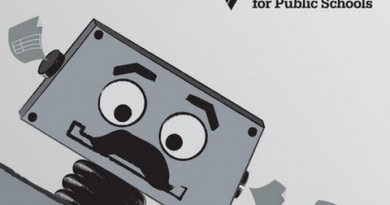Digital Literacy and Citizenship
This post is a reflection on the Leading Edge Digital Educator unit on Digital Literacy and Citizenship.
Portfolio assignment for module 3: Keyboard Shortcut Announcements
4a. Advocate, model, and teach safe, legal, and ethical use of digital information and technology, including respect for copyright, intellectual property, and the appropriate documentation of sources
I do directly teach my students about creating citations using easybib.com and how to give credit for our sources. Whenever I have my students build websites, I make sure that they attribute all their content to the creators and add hyperlinks to the sources of their information. We are on a closed Google domain and the work is not being shared publicly so I unfortunately have gotten lazy and will use whatever image I can find for a presentation, with or without the proper attribution. As we need to list a concrete way we will be modeling digital citizenship, giving all images and content the proper attribution all of the time is something I need to do in the coming year. This is especially important as I hope to build a website to share my content and do not want to put myself in any sort of unethical practices situation.
4b. Address the diverse needs of all learners by using learner-centered strategies providing equitable access to appropriate digital tools and resources
This next year I am planning to build my classroom around the blended learning model. Not only will this free me from delivering ineffective whole class instruction, but will allow me to target my instruction much more specifically. I am planning to have certain sequences of activities and lessons for the students, but the online and self-paced nature of the content will allow students to work at a pace that matches their needs and to get more individual or small group instruction. Also, any content or videos that I create can be watched and rewatched at any time to suit the student’s needs.
4c. Promote and model digital etiquette and responsible social interactions related to the use of technology and information.
As many people have mentioned already, Google Classroom is an excellent forum for modeling and practicing this. Students need to be taught the appropriate methods for communicating in a classroom newsfeed and to understand what sort of comments are helpful and not. The mute button is very powerful but I agree should be used temporarily so that a student has an opportunity to reengage in the conversation. For one of my classes last year, I had to change the setting so that the students could only comment on my posts, because the feed was bogged down with unnecessary discussions that made it difficult to find the assignments.
Whenever I grade form submissions, I always look at their grammar and punctuation because I really want them to be able to type and present themselves as an intelligent person online. Understanding when texting acronyms are appropriate and not is a skill that they should learn early in their lives as opposed to later. And while I do my best to type perfectly, I do thank them whenever someone catches one of my errors.
4d. Develop and model cultural understanding and global awareness by engaging with colleagues and students of other cultures using digital age communication and collaboration tools.
This one is tough. I am planning to develop my website and YouTube channel to start sharing my lessons with a broader audience. Twitter seems like the fastest way to start connecting with other people so I will be starting my outreach through that network now (@knechtSTEM). My website is intended for other educators, but I’m hoping my YouTube channel will have resources for both students and for educators.
The hardest part of this standard is engaging the students with groups outside our school. We have the tools to do so, but I would just want to make sure that any outreach is meaningful and related to our content. This truly is a door that I haven’t even begun to open yet but definitely see the potential value in this type of activity.
